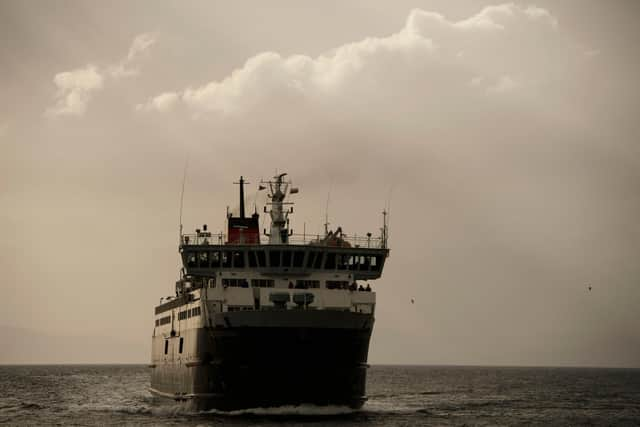Ferry fleet ‘left to rust’ as cost of CalMac repairs spiral
Since the start of the current CalMac franchise in 2016, the cost of repairs and maintenance for the fleet has risen by 23 per cent to £17,262,000 for the year. The total cost of repairs over the last five years amounts to £83,661,000.
CalMac’s services comprise the UK’s largest ferry operation, with a network of 29 routes stretching from Stornoway to Campbeltown.
Advertisement
Hide AdAdvertisement
Hide AdA number of the sharpest increases were for ships running well past their original 25-year lifespan. This includes a 70 per cent rise in costs for the 36 year-old MV Loch Striven over the last five years; a 61 per cent rise in the costs for the 37 year-old MV Isle of Arran over the last five years and a 73 per cent rise in costs for the 29 year-old MV Caledonian Isles over the last five years.
Some of the newer vessels are not faring much better, with costs for the beleaguered MV Loch Seaforth rising 45 per cent, despite it only being launched in 2014. Similarly, costs for the seven year-old MV Catriona have tripled, rising by 197 per cent.
The two ferries being built at Ferguson’s Marine shipyard were originally expected to be up and running in 2018, however, it is now likely to be summer 2023 before these are delivered in full.
Scottish Labour’s Islands spokesperson Rhoda Grant said: “The SNP have abandoned island communities and left Scotland’s lifeline ferry fleet to rust. Years of neglect have left Scotland’s ferry fleet in a pitiful state, and their catastrophic mismanagement of the Ferguson’s Marine contracts made a bad situation worse.


“It is little wonder costs are soaring when we are relying on vessels a decade past their lifespan. The SNP’s shambolic approach to shipbuilding has failed islanders, workers and taxpayers alike. We desperately need some strategic thinking in the new ferry plan – something that has been sorely lacking so far.”
CalMac has seen only 13 vessels introduced in the last 20 years compared to 19 in the previous two decades, and 40 in the same period before that. In 2001, its longest-serving ferry was 28 years old. However, the oldest is now 44 years old, and average age is 22 years.
A Transport Scotland spokesperson said: “We acknowledge the Caldonian Maritime Assets Ltd (CMAL) fleet is aging and that’s why we are delivering new tonnage to support our communities by working with CMAL, CalMac, MSPs, community representatives and others to develop investment programmes - at least £580 million over the next five years - for major vessels and small vessels.
“CalMac, as the operator of the Clyde & Hebrides Ferry Services, are required to keep the vessels seaworthy and in a good and efficient state of repair. This includes maintain the classification of the vessels with the relevant Classification Society as well as complying with all other regulations and requirements.”
Advertisement
Hide AdAdvertisement
Hide AdHe added: “Ferries throughout Europe generally have a 30 year service life provided they are regularly maintained and serviced throughout this period. Vessels that carry on after the 30 years period will have increased maintenance costs as equipment will require replacement as opposed to serviced.”
A message from the Editor:
Thank you for reading this article. We're more reliant on your support than ever as the shift in consumer habits brought about by Coronavirus impacts our advertisers.
If you haven't already, please consider supporting our trusted, fact-checked journalism by taking out a digital subscription.
Comments
Want to join the conversation? Please or to comment on this article.
